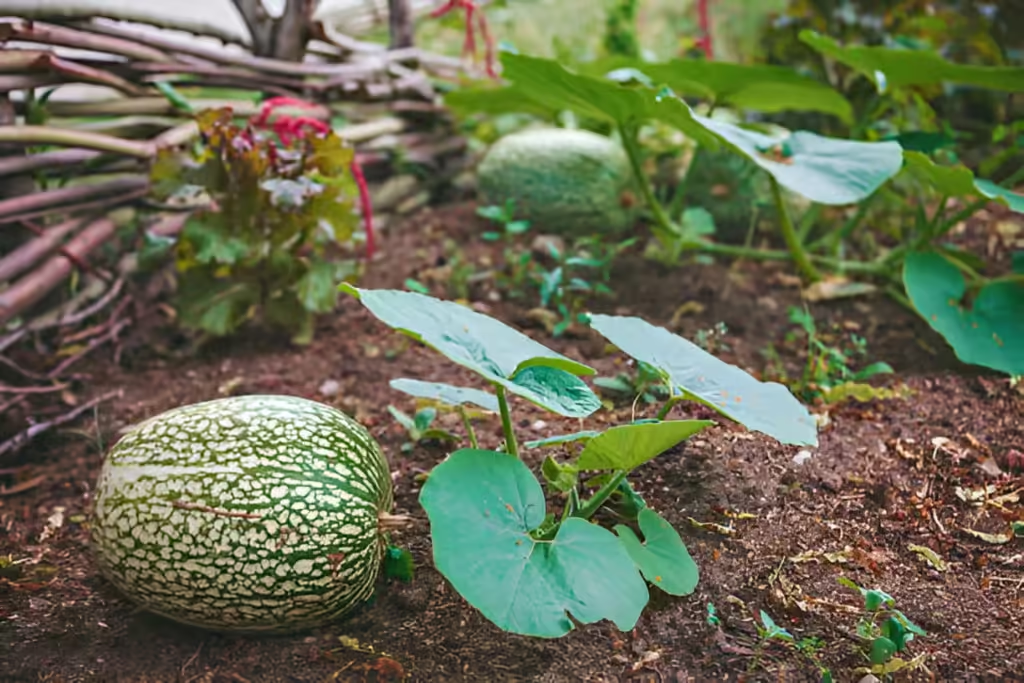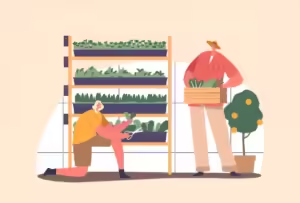As summer draws to a close, gardeners have a unique opportunity to extend their growing season and enjoy a productive fall garden. While many might think that the gardening season ends with the first frost, seasoned experts suggest otherwise. By selecting the right crops and following essential gardening practices, you can maximize your garden’s yield well into the cooler months. Here’s how you can make the most of your fall garden, with insights from gardening experts.
Why Fall is the Perfect Time for Gardening
Fall gardening is all about timing and understanding the unique climate conditions of the season. Thomas Nelson, a gardening expert from The Garden Magazine, emphasizes that “the key to a successful fall garden lies in choosing crops that thrive in cooler temperatures and mature quickly.” This means focusing on vegetables that can handle the drop in temperature and still produce a bountiful harvest.
The Morton Arboretum also highlights that the cooler weather and increased rainfall in September create optimal planting conditions for trees, shrubs, and spring-flowering bulbs. The moist soil allows roots to establish more efficiently, which is critical for the plants’ survival during the winter months.
What to Plant in a Fall Garden
Choosing the right crops is crucial for a productive fall garden. Here are some expert-recommended vegetables that are perfect for planting in the fall:
- Radishes: According to Thomas Nelson, “Radishes are one of the quickest-growing crops, with some varieties ready to harvest in just 25 to 35 days. This makes them ideal for continuous planting throughout the fall.” Their fast growth rate allows you to enjoy fresh produce in a short time, and they thrive in the cooler fall weather.
- Beets: Beets are another excellent choice for fall gardening. They not only tolerate cooler temperatures but also improve in flavor as the weather cools down. They can be harvested before the first frost or left in the ground for winter storage.
- Turnips: Like radishes and beets, turnips are a root vegetable that thrives in the fall. They grow quickly and can be used in a variety of dishes, making them a versatile addition to your fall garden.
The Morton Arboretum also suggests planting trees, shrubs, and spring-flowering bulbs during this time. The cool weather and moist soil create ideal conditions for these plants to establish strong roots before winter.
Preparing Your Garden for Fall
Preparation is key to ensuring your fall garden’s success. Here are some essential steps to take before planting:
- Clear Out Summer Crops: Remove any remaining summer crops from your garden. This will prevent pests and diseases from lingering and affecting your fall plants.
- Amend the Soil: Add compost or organic matter to your soil to replenish nutrients depleted during the summer. This will give your fall crops the best chance to thrive.
- Mulch: Applying a layer of mulch can help retain soil moisture and regulate temperature, protecting your plants as the weather cools.
- Plan for Frost: Be prepared for the first frost by having row covers or cloches ready to protect your plants. According to The Morton Arboretum, “digging up tender perennials and bringing houseplants indoors before the temperatures drop below 55°F is essential for their survival.”
Expert Tips for Maximizing Your Fall Garden
To get the most out of your fall garden, it’s important to follow expert advice. Here are some additional tips from gardening professionals:
- Succession Planting: Thomas Nelson recommends succession planting, which involves planting new crops every few weeks. This method ensures a continuous harvest throughout the fall and helps make the most of your garden space.
- Pest Control: Fall gardens can still attract pests, so it’s important to monitor your plants regularly. Use organic pest control methods to protect your crops without harming beneficial insects.
- Watering: Even though the weather is cooler, don’t forget to water your plants. Fall crops still need regular watering to grow and produce a healthy harvest.
Conclusion: Embrace the Fall Gardening Season
Fall gardening offers a unique opportunity to extend your growing season and enjoy fresh produce well into the cooler months. By choosing the right crops and following expert advice, you can create a productive fall garden that yields a bountiful harvest. As Thomas Nelson reminds us, “fall gardening is all about timing and understanding your garden’s unique needs.” So, don’t let the change in season stop you from enjoying the rewards of gardening—embrace the fall, and your garden will thrive.
FAQ
Q: What are the best crops to plant in a fall garden?
A: Radishes, beets, and turnips are ideal for fall gardening because they grow quickly and thrive in cooler temperatures.
Q: When should I start planting my fall garden?
A: It’s best to start planting your fall garden in late summer to early fall, depending on your climate zone. Aim to plant crops that will mature before the first frost.
Q: How can I protect my fall garden from frost?
A: Use row covers, cloches, or bring tender plants indoors to protect them from frost. Mulching can also help regulate soil temperature.
Q: Do I need to water my fall garden as much as my summer garden?
A: Yes, fall crops still require regular watering, especially during dry spells. However, you may need to water less frequently than in the summer due to cooler temperatures.
Q: Can I plant flowers in the fall?
A: Yes, fall is an excellent time to plant spring-flowering bulbs like tulips and daffodils. Trees and shrubs can also be planted during this time.








